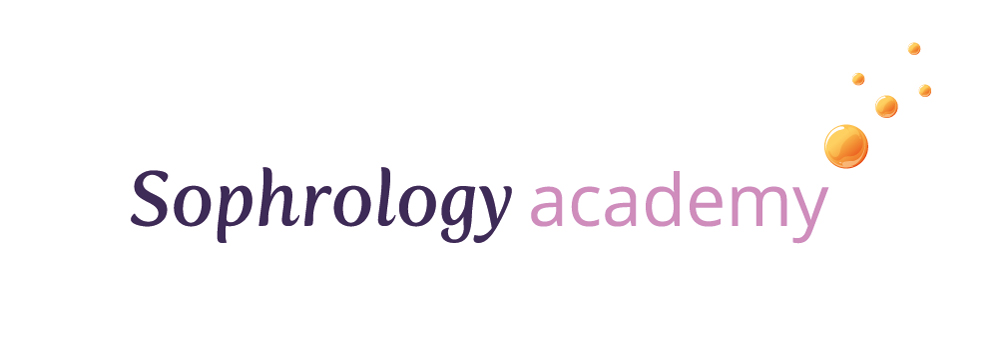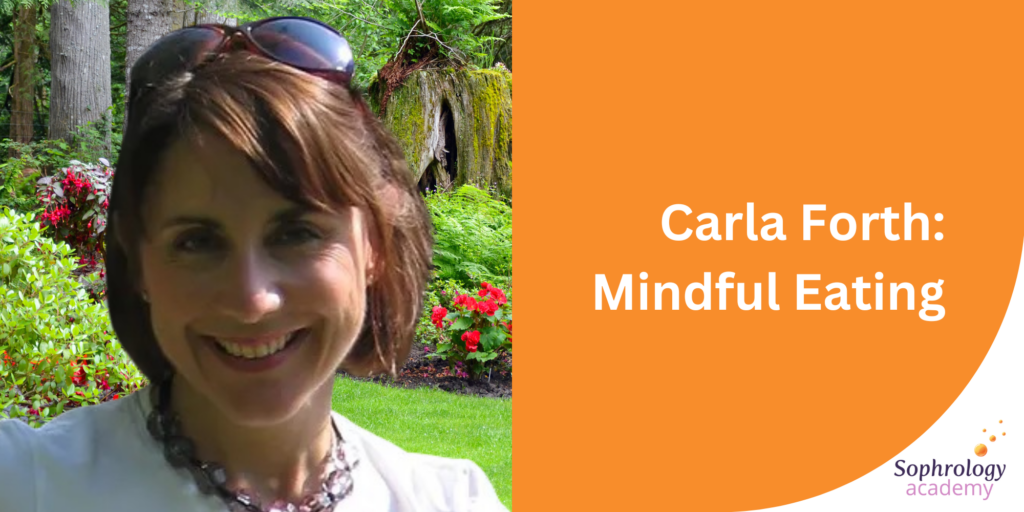Having more control over what and when we eat can be challenging – particularly when we are busy or have a lot on our minds. These are often when our intentions to eat well can be quashed by a need for comfort, or a welcome distraction.
It’s a cycle that can be very difficult to break; however, methods such as Sophrology can help us access and develop a more mindful eating practice.
From ‘Mind-less’ Eating …to Mindful Eating
The Sophrology method is unusual in that it combines western relaxation techniques with eastern practices such as mindfulness, meditation and light yoga. In this way, the techniques used help gain a more comprehensive connection with our food using both body and mind – through our sensations, thoughts and feelings.
Carla Forth, Sophrologist and owner of The Stress Solution Sophrology, works with people across a wide range of issues in her practice, but consistently finds that yoyo-dieting is a commonly recurring theme. This has been no surprise to Carla, whose own relationship with food had been an ongoing problem:
“Often, I would eat whilst reading or watching the tv, and be unaware of how much I had eaten or whether I was satiated. Now, this is fine on odd occasions, but when it starts to become the norm, it’s time to pay more attention to our eating behaviours. Practising mindful eating can help to achieve this.”
Using Sophrology techniques and drawing on her own personal experience, Carla helps clients practice better natural self-regulation of their eating. Here, she explains the principle of mindful eating and how it can shift a lack of attention to our food to a more intuitive, attentive eating practice.
“Mindfulness is when we are fully present in what we are doing, with our mind and body, totally engaged with whatever it is that we are focused on. For many of us, eating can become automatic or ‘mind-less’. Mindful eating starts when we tap into what our body desires.”
Food as a Journey
However, mindful eating, Carla explains, isn’t just about the moment we have our meal; it includes all of the choice points we have along the meal journey leading up to putting the food on our plate, and after.
“We need to practice greater awareness of our journey towards our meal – from planning and buying the produce, to preparing and cooking it, then finally sitting down to eat it. The more aware we are of each choice point, the greater the likelihood that we will make better decisions.”
So how can we become more mindful of the food on our plates?
Carla suggests that developing our capacity to become more aware is a good starting point, whether that’s through traditional meditation, yoga or through the practice of Sophrology:
“What we do in our practice helps us to become more aware and present in our daily lives so that our capacity to self-regulate naturally increases. Developing our capacity to be more aware, provides space in which to slow down, to pause and become more present with what we are doing – and this can really help with mindful eating.”
Below, Carla shares some practical tips, which include Sophrology techniques, to help us eat and cook for ourselves with better awareness:
Mindful Cooking and Eating: Practical Tips
Allocate time for mindful cooking
Cooking is an experience, so give yourself time and space to immerse yourself in the process. Work backwards from the time you’d like to eat, including the time you’ll need to cook your meal. It’s important not to be rushed – being relaxed is essential to enjoying the process.
Check your hunger levels
Notice how hungry you are before you start to cook. Using a scale of 1-10 can be helpful, with ‘1’ being ravenous and ’10’ completely full – uncomfortably so.
Take a moment to relax
Before you start cooking, take a few minutes to release any tension in your body by doing some Sophrology exercises such as tense and release, some breath awareness or a breathing exercise such as square breathing. (Find examples of Sophrology exercises here). Then, visualise how the meal might look on your plate when it’s ready, seeing all the different colours and textures. Finally, imagine a calm and quiet environment in which to eat. Of course, the latter might not always be possible! However, having the intention can really help.
Ensure you have all your ingredients
Have all that you need to make your meal to hand before you start cooking, together with any recipe or instructions you might need if you are cooking from scratch.
Be present in your preparation
As you prepare the food, try to be as present as you can; feel the knife chopping into the vegetables, notice any smells coming from the food, and the different colours and textures of the food in your hand.
Then, as you cook, notice how the food changes, as it breaks down under heat or if it is raw food, how it is arranged on your plate.
Set the scene
Assuming you are eating at a table, be present in setting the table ready for your meal – perhaps having a candle or other centrepiece and anything else that will make your meal a pleasure to experience.
Gauge your portions
When the food is cooked, and you are ready to serve portions onto the plates, notice how much you give yourself, and how much you give to others. With awareness or mindfulness practice, we begin to pick up instinctively, what portion size is right for us.
Pause before eating
Once seated, take a moment to pause before starting to eat. You might say grace, say thank you over the food, or to others who are with you. Alternatively, you might simply take three mindful breaths, in part, to touch into gratitude, but also to give yourself time to become really present with your food.
Pace your eating
To slow down your eating, put down your knife and fork between mouthfuls; this allows us to focus on tasting the food in our mouths and focus on chewing – an essential part of digestion. Notice, without judgment, when you eat, how slow or fast you eat? Do you chew your food sufficiently or do you swallow quite quickly? Do you feel you can taste all the different flavours in the foods – sweet, sour, salty, or bitter?
Check your fullness levels
As you approach the end of the meal, begin to notice how satisfied you feel: are you comfortably full, or do you feel you could eat more? Again, use the hunger/fullness scale of 1-10 to determine where you are. This is a handy tool for developing intuitive eating habits, although it can take time to establish the interoception. (our ability to notice the internal state of our body; for example, fullness).
As you finish the meal, stop and pause, and perhaps give thanks again for what you have eaten.
By integrating these tips with your daily eating habits, Carla suggests, it becomes easier to develop your mindful eating practice, and with that, our intuitive eating – able to tap into what our body needs and wants in terms of the different types of food, how much and how often we need to eat.
Sophrology as a Path to Well-being
Hopefully, these tips, kindly provided by Carla, will help set you on a path towards developing a better relationship with food.
However, Sophrology is far more than an effective tool for developing healthier eating habits. Increasingly, the method is used by health professionals, therapists and medical practices as a valuable complementary health tool for a wide range of mental and physical health issues, from stress and burnout, to pain, and problems with sleeping.
How so?
By using both body and mind to relax, those who practice the techniques are better able to develop greater resilience, positivity and calm in how they manage their health and wellbeing. And any problem, whether with stress, pain, food or sleep, can become much more manageable with a positive attitude!
Learn with Us
Whether you’d like to find out more about becoming a certified Sophrologist or simply wish to learn the Sophrology techniques to improve your well-being, find out more about our courses and events at the Sophrology Academy.
The Sophrology Academy team wishes to thank Carla for her practical and insightful input into this blog.


